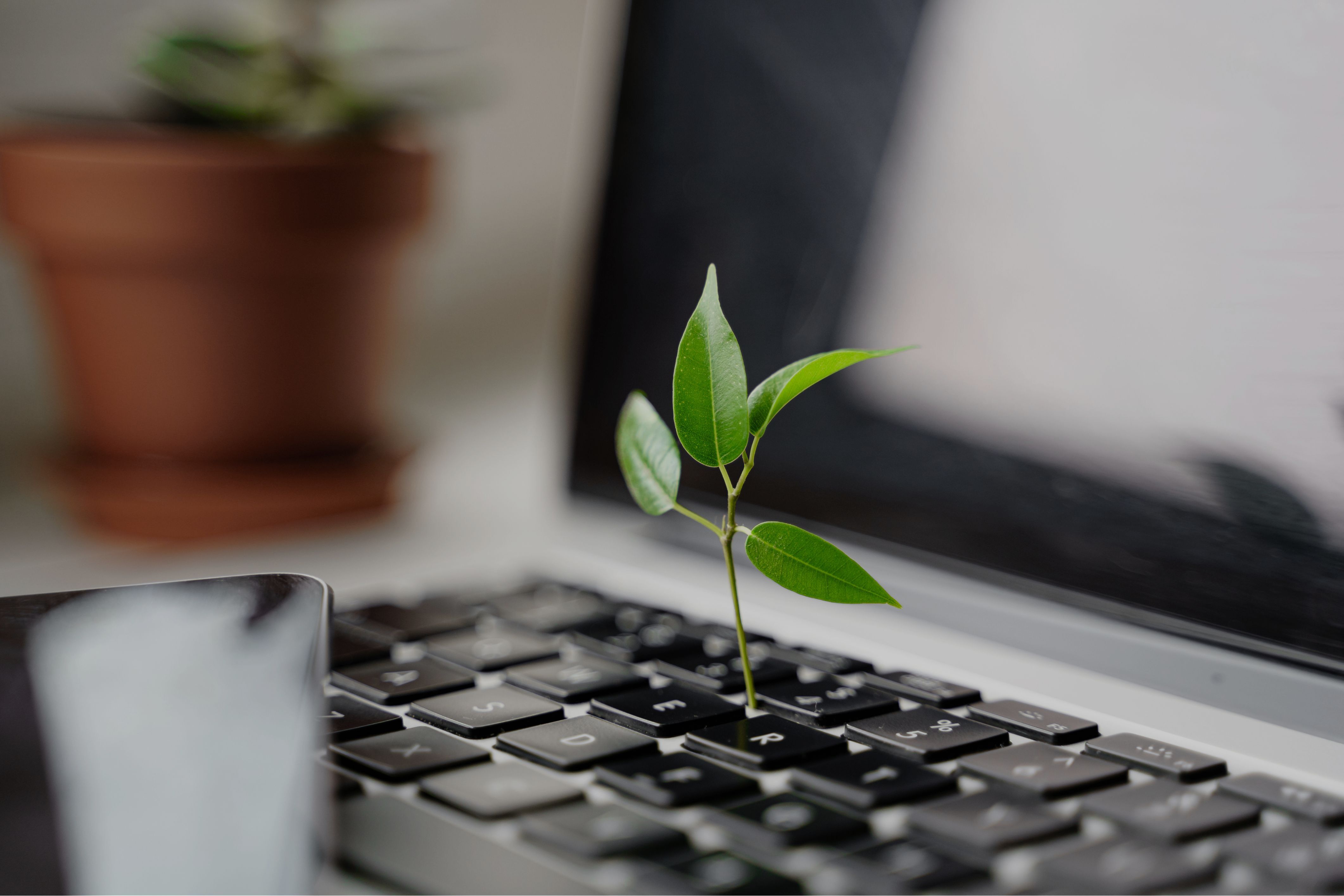The term “sustainability” has echoed across boardrooms for decades, yet its relevance is only growing. A recent Morgan Stanley survey found that 88% of companies now see sustainability as a way to create value, not just manage risk.
At the same time, consumer behaviours are shifting quickly. A PwC survey reports that 85% of consumers feel the effects of climate change, and many are willing to pay more for sustainable products.
This shift matters for leaders, managers, and decision-makers in every sector who want to stay competitive, build resilience, and meet rising expectations from customers, investors, and employees.
In this post, we’ll break down the business case for sustainability, explore the measurable benefits for companies and show how smart sustainability strategies can deliver both ROI and positive impact.
Table of Contents
Why sustainability is gaining business momentum
The “business case for sustainability” is simple: doing good for the planet and society increasingly goes hand-in-hand with doing well financially. It’s about embedding sustainability into the core of your operations so it drives value, not just compliance.
Three forces are making this more urgent than ever:
- Market expectations
Customers, investors, and employees now expect action, not promises. Brands that can prove their commitment to sustainability are winning loyalty, attracting talent, and securing investment.
- Regulation
From the Corporate Sustainability Reporting Directive (CSRD) in Europe to net-zero targets worldwide, companies are facing stricter disclosure and performance requirements. Meeting these isn’t just about avoiding penalties, it’s about building transparency and trust.
- Competitive advantage
Businesses that integrate sustainability into their strategy are outperforming peers. Research from the NYU Stern Center for Sustainable Business shows that products marketed as sustainable grew 5.6 times faster than conventional ones (NYU Stern, 2018). That kind of growth shows how much consumers value companies that walk the talk. These businesses also tend to be more resilient, resource-efficient, and better positioned to innovate (Harvard Business Review, 2019).
The ROI of sustainability
For many years, sustainability was seen as a cost. As something you had to pay extra for in order to incorporate. Today however, it’s proving to be an investment that delivers measurable returns. Businesses that commit to sustainable practices are not only reducing risk, but also unlocking new revenue streams, cutting costs, and strengthening their brand.
A global study by Accenture in collaboration with the World Economic Forum found that organisations deeply embedding sustainability into operations outperform peers by 20% in profitability (Accenture & WEF, 2021).
McKinsey’s research supports this too. Their analysis 2,269 public companies found that “triple outperformers” (companies excelling in growth, profit, and sustainability) deliver 2 percentage points of annual Total Shareholder Return (TSR) more than peers who excel only financially, and 7 percentage points more than the rest of the dataset (McKinsey, 2023).
In short, the ROI of sustainability is clear. Embedding sustainable practices is a tested route to stronger growth, profitability, and long-term resilience. These insights set the stage for something even more tangible.
IKEA’s Sustainability Success
Although IKEA is a global name, its sustainability journey offers grounded lessons smaller businesses can draw from.
Before: Ikea’s traditional retail model generated strong revenue but came with a heavy environmental footprint. Its operations consumed massive amounts of energy, and logistics created high emissions, making sustainability a growing concern.
Sustainability Actions:
- Clean energy shift: In FY24, IKEA increased its use of renewable electricity from 77% to 81% of stores and facilities (IKEA, 2025).
- Circular practices: The company launched its Buyback & Resell program, promoting reuse and repair while reducing waste.
- Green logistics: Expanded use of electric vehicles and energy efficiency initiatives, contributing to a 28% reduction in climate footprint since FY16 (IKEA, 2025).
After - Impact:
- Financial growth: Since 2016, IKEA has increased revenue by approximately 24%, while reducing its climate footprint by over 30% (Ingka, 2025).
- Customer engagement: More than 211,600 customers took part in the Buyback & Resell program in 2023, reflecting strong demand for sustainable options (Ingka 2024).
- Cost and credibility gains: Renewable energy use and EV adoption lowered long-term operational costs and strengthened consumer trust.
Why This Matters
IKEA proves that sustainability and profitability can grow side by side. Importantly, smaller businesses don’t need billion-euro budgets to get started. Even modest steps, like installing partial solar panels or trialling hybrid vans, can reveal cost savings, cut emissions, and build stronger loyalty with customers who value action.
What businesses can learn
The IKEA example clearly shows that when sustainability is treated as a strategic priority, it creates measurable results. But you don’t need IKEA’s scale or massive budget.
The lesson for other organisations, especially SMEs, is to focus on three things:
- Start with your biggest footprint
Identify where your operations have the highest costs or emissions – whether it’s energy, logistics, or materials – and look for smarter, more efficient alternatives. - Turn sustainability into a value driver
Don’t just position it as a compliance exercise. As IKEA’s renewable energy investments showed, initiatives that save resources also improve margins and strengthen your reputation. - Think long-term, act small
Large results often come from a series of smaller, focused moves. Even piloting renewable energy on one facility, or redesigning packaging to cut waste, can unlock savings and send a strong message to customers and employees.
When businesses start to view sustainability as part of their growth strategy, not just a responsibility, they open doors to resilience, efficiency, and innovation.
How to Get Started: Your Sustainability Roadmap
Getting started with sustainability doesn’t have to mean a complete business overhaul. The most effective transformations often begin with small, targeted actions. Here’s a simple 90-day plan to kickstart meaningful progress:
- Audit your impact
Spend the first 30 days mapping where your business has the biggest environmental or social footprint. Look at areas like energy use, logistics, supply chain, and waste. Even a simple audit can reveal opportunities for cost savings and efficiency.
Tip: Ask each team to identify three resource-heavy processes or materials they rely on most.
- Choose one focused initiative
In the next 30 days, pilot a single, achievable project. This could be switching part of your energy supply to renewables, running a small-scale recycling program, or sourcing one product line more responsibly. Keep it specific and measurable.
Tip: Frame it as an experiment, not a permanent change, so teams feel comfortable testing new ideas.
- Track and share results
In the final 30 days, measure the impact of your pilot. Did it reduce costs? Save time? Improve employee engagement? Sharing results internally builds momentum and shows that sustainability is more than “nice to have”, it’s good business.
Tip: Focus on 2–3 simple KPIs, like reduced energy bills, waste avoided, or employee participation.
- Scale what works
By the end of 90 days, you’ll know what’s delivering value. Build on those small wins, expand the scope, and start embedding sustainability into the core of your business strategy.
As you scale what works, it’s also smart to put some basic guardrails in place. Simple steps like tracking emissions consistently, making supply chains transparent, and being clear in how you communicate progress build both trust and resilience.
Sustainability strategies are only as strong as the people behind them. And right now, there’s a shortage of professionals who understand ESG, climate risk, and ethical reporting.
Companies that want to meet sustainability goals, or comply with new regulations, need people who understand the landscape.
According to LinkedIn’s Global Green Skills Report, job postings requiring “green skills” have grown by over 8% annually since 2015, while the talent pool hasn’t kept up. This is a clear signal: investing in education is part of any serious ESG strategy.
Ready to take the next step?
The business case for sustainability is no longer hypothetical. From cost savings and stronger margins to customer trust and long-term resilience, the evidence shows that doing good and doing well now go hand in hand.
Sustainability is now a proven driver of innovation, efficiency, and growth. And the good news is that every organisation, regardless of size or sector, can start small and scale from there.
Explore Hyper Island's Sustainability Change Leadership Upskill course and Circular Service Design Upskill course to discover how you can be part of driving real, lasting change.


WANT TO GET NOTIFIED ABOUT OUR EVENTS?
Join our mailing list for tips, events, and opportunities.

